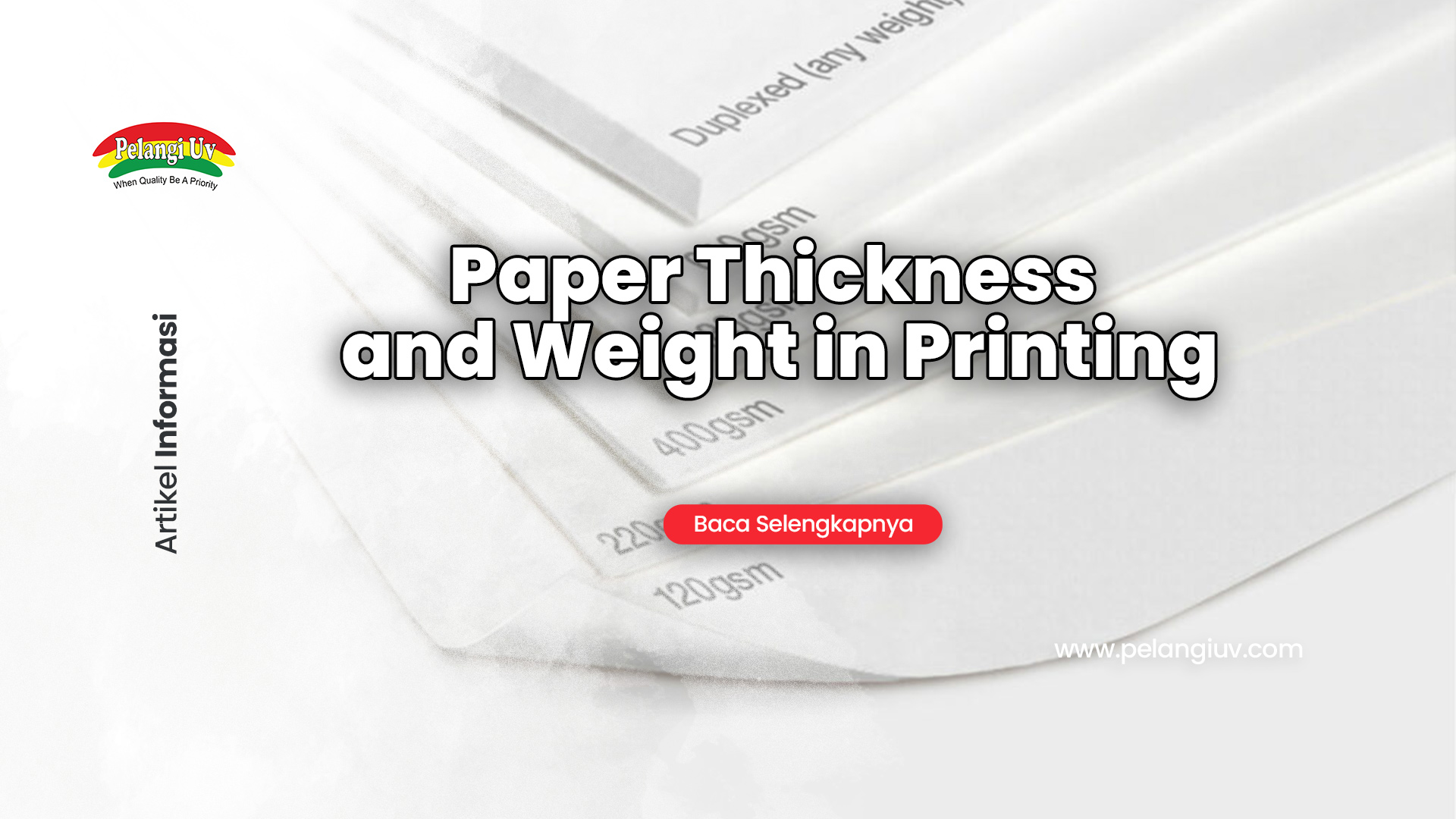Paper Thickness and Weight in Printing
Did You Know, Finishing Friends? The type, thickness, and weight of paper are crucial factors to consider in the printing world. It's not without reason—thickness and weight play a significant role in determining whether a particular type of paper can be processed by a machine.
By ensuring the correct paper thickness and weight, you can simplify the process of selecting the right paper.
Using tools to measure paper thickness can help ensure accuracy. Therefore, it's essential to understand which paper thickness and weight are best suited for your product and how it will be processed. Scroll down to learn more!
Understanding Paper Thickness and Weight
Knowing the thickness and weight of paper helps you determine the most suitable options for your printed products. In the printing industry, paper thickness is often referred to as "Thickness," while paper weight is referred to as "grammage" or GSM.
The thickness of the paper affects its durability and the quality of the printed product. Thicker paper is typically more durable and less prone to tearing.
Although thicker paper may appear more impressive, the quality of a printed product is not solely determined by its weight. The type of paper used also plays a crucial role in the final result.
The key differences between paper thickness and weight are explained below:
Paper Thickness (Thickness):
- Definition: Paper thickness is measured in micrometers (µm) or millimeters (mm), referring to the physical thickness of the paper.
- Impact: Paper thickness determines its stiffness and durability. Thicker paper is stronger and more rigid, making it ideal for applications like book covers, business cards, or posters.
- Example: Paper with a thickness of 100 µm is thinner than paper with a thickness of 200 µm.
Paper Weight (Grammage):
- Definition: Paper weight is measured in grams per square meter (gsm), which refers to the weight of a square meter of paper.
- Impact: Grammage affects the density and thickness of the paper. Heavier paper typically feels thicker and denser. For example, 80 gsm paper is lighter than 150 gsm paper.
- Example: HVS paper used for printers usually weighs between 70-100 gsm, while cardboard paper can weigh between 200-300 gsm.
What is GSM in Printing?
Ever heard the term GSM in printing? GSM stands for "Grams per Square Meter," which is a unit used to measure the weight of paper. In other words, it's commonly used to describe the weight of paper.
While GSM is often equated with paper thickness, this isn't entirely accurate. Though GSM influences paper thickness, the actual thickness is measured in microns (one-thousandth of a millimeter).
GSM is frequently considered a proxy for thickness because, in practice, there's a correlation between the two. Paper with a higher GSM is typically thicker. This simplification often leads people to use GSM as a measure of thickness.
However, paper thickness is more precisely determined by the "caliper" or physical measurement of thickness in microns. Two papers with the same GSM can have different thicknesses depending on the type of material or its density. So while GSM and thickness are related, they aren't always directly proportional due to differences in paper composition.
GSM refers to the weight of a sheet of paper with a surface area of one square meter. As a result, the ratio between the paper's surface area and weight is expressed using GSM or grams (g).
The higher the paper's grammage, the heavier and thicker it will be. Knowing the GSM helps you choose the right type of paper for your needs.
Paper Thickness and Weight Based on Needs
Certain applications require specific paper thickness and weight, such as brochures, flyers, or business cards, which should use thicker paper types.
Below are the paper thickness and weights you need to know:
- 80-120 GSM: This paper weight is commonly used for office needs, such as report covers. This grammage is also often used in the printing industry as it produces clearer and more vibrant colors.
- 130-170 GSM: This paper weight is ideal for flyers, leaflets, brochures, and posters, as it is more resistant to UV rays and water.
- 200-300 GSM: Ideal for premium flyers or brochures due to its thicker and stiffer texture.
- 300-400 GSM: This grammage is often used for business cards, meeting documents, and stationery as it provides a sturdy and premium finish.
Tools for Measuring Paper Grammage
To accurately measure paper grammage, a micrometer screw gauge is used. This tool is highly precise, with an accuracy of around 0.01 mm, and is used to measure small or thin objects like paper.
Conclusion
Now you know about paper thickness and weight in the printing world! GSM is often associated with paper thickness due to its correlation with weight. While GSM measures weight per square meter, paper with higher GSM is generally thicker. This leads to the common simplification of GSM as a measure of thickness.

